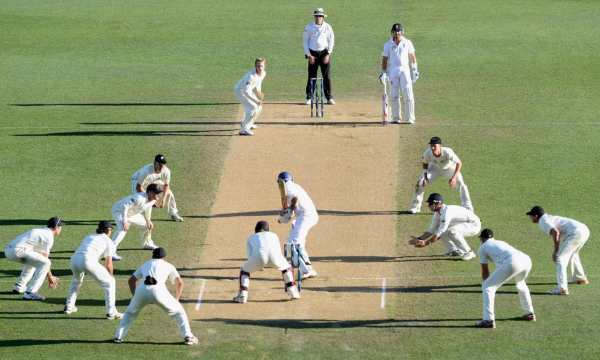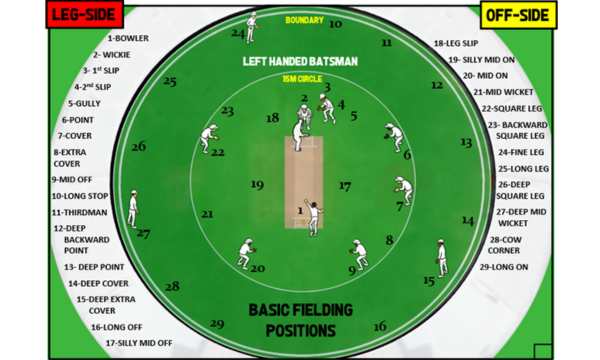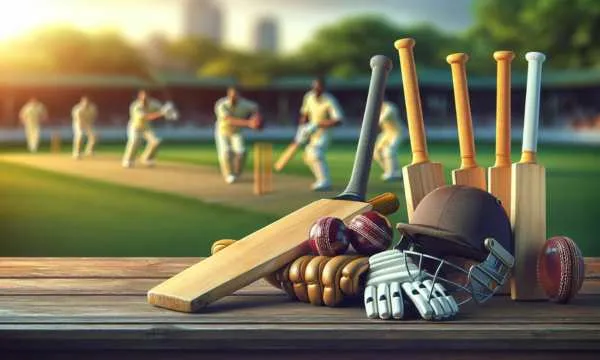Cricket Field Positions: Understanding Champion Strategies
Strategically distributed around the oval, cricket field positions determine a team’s success on the field.
Ad
Each player has a specific role based on their skills and the captain’s strategy.
Understanding cricket field positions is not only essential for following matches but also fundamental to appreciating the strategic depth of this ancient sport.
In the following sections, we unveil each role and its importance in the tactical field play during a competitive match.
Get ready to elevate your cricket knowledge to a new level!
The Wicket-keeper
The wicket-keeper is the only position in cricket that requires specialized protective equipment.
Positioned directly behind the stumps on the batsman’s side, he is the last line of defense against unplayed balls.
His responsibilities include catching deliveries that pass the batsman and executing stumpings when the batsman steps out of the crease.
The best wicket-keepers combine cat-like reflexes with precise reading of deliveries.
The position demands uninterrupted concentration for long hours, as any ball could come their way.
In modern cricket, wicket-keepers are also chosen for their batting abilities.
This field position often serves as the “traffic director,” constantly communicating with the bowlers and adjusting defensive positions.
Key skills:
- Extraordinary reflexes
- Physical and mental endurance
- Ability to maintain prolonged concentration
- Vocal leadership on the field
Quick Hands and Extreme Focus (Slips/Gully)
The cricket field positions known as slips form a cordon of catching specialists.
Aligned in sequence behind the batsman, these players must intercept balls edged off the bat.
The first, second, and third slips, along with the gully, constitute the classic “catching trap” for fast bowlers.
These positions don’t require extensive running but demand instant reactions. A ball edged can travel at impressive speeds, giving less than half a second to react.
Players in these cricket field positions are usually the most experienced in the team. Many matches are decided by the quality of hands in the slip positions.
Critical factors:
- Firm hands to absorb impact
- Absolute mental focus on each delivery
- Precise positioning based on the bowler
- Ability to stay alert even after hours without action

Cricket-match-(Source-Google)
Bravery in the Field (Silly and Short Leg)
The cricket field positions called “silly” are not named so without reason.
Placed just a few meters from the batsman, these players demonstrate extraordinary courage.
Silly point, silly mid-off, and short leg are so close that they barely have time to react to powerful shots.
These positions are often employed against new batsmen or when facing spin specialists.
Players use additional body protection, though it offers limited comfort.
Strategically, these cricket field positions exert psychological pressure on the batsman, limiting their shot options.
Essential requirements:
- Ability to show no fear
- Instant reflexes
- Complete attention to reading the batsman’s intentions
Agility and Anticipation (Point, Cover, Mid-wicket)
These cricket field positions require complete athletes capable of covering large areas quickly.
Point intercepts powerful cuts, while cover and mid-wicket need to react to both drives and lateral shots.
Players in these positions combine speed with anticipatory reading of plays.
The ability to dive and recover quickly defines specialists in these cricket field positions.
They save numerous runs throughout a match, often converting potential boundaries into just one or two runs.
Positioning constantly varies based on the batsman’s style and the bowling strategy.
Determining characteristics:
- Speed in all directions
- Accurate and powerful throws
- Ability for spectacular dives
- Anticipatory reading of the batsman’s intentions
- Ability to adjust position between deliveries
Control Under Pressure (Mid-on and Mid-off)
Mid-on and mid-off occupy cricket field positions that demand extraordinary judgment.
These players are generally closer for fast bowlers and further back for spin specialists.
They must intercept powerful drives, requiring safe hands and considerable courage.
These positions are often occupied by the captain or experienced players who can advise the bowler.
Constant communication between these cricket field positions and the bowler adjusts the strategy ball by ball.
Players in these positions must perfectly understand the tactical plan for each batsman.
Specific responsibilities:
- Strategic communication with the bowler
- Positional adjustments based on the game plan
- Ability to intercept powerful drives
- Leadership in the inner field
Safe Hands and Strong Arms (Long On/Off, Deep Cover/Mid-wicket)
Specialists in deep cricket field positions are the last line of defense against powerful shots.
Placed near the boundary rope, these players combine maximum reach with throwing accuracy.
Their main mission is to convert potential sixes (6 points) into just boundaries (4 points) or less.
These positions require excellent judgment of the ball’s trajectory at high speed.
Perfect timing for boundary jumps can save crucial points at decisive moments.
These players also need powerful and precise throws to return the ball quickly, preventing additional runs.
Fundamental skills:
- Ability to cover vast areas quickly
- Accuracy for long throws
- Judgment of the ball’s trajectory against the sky
- Technique for boundary-line jumps
- Endurance to maintain speed throughout the match

Cricket-field-positions-(Source-Google)
Boundary Specialists (Third Man and Fine Leg)
Third man and fine leg occupy cricket field positions that require specialization in unusual angles.
These positions intercept fine edges and angled shots that often result in easy runs.
Their correct positioning can turn a productive play into a dramatic dismissal.
Players in these positions must anticipate both intentional shots and accidental edges.
They need to cover long distances when the ball travels quickly in unpredictable trajectories.
They frequently adjust their depth as the match progresses and based on the current batsman’s tendencies.
Technical demands:
- Understanding of complex angles
- Exceptional anticipation ability
- Speed to cover large distances
- Accurate long-distance throws
- Flexibility for frequent positional adjustments
Captain’s Strategies for Fielding a Winning Team
Efficient distribution of cricket field positions defines a captain’s success.
Each setup represents a tactical puzzle adapted to the batsman, bowler, and match conditions.
Experienced captains constantly adjust positions, responding to batting patterns and changes in the playing surface.
The best strategies for field positions combine analytical data with competitive intuition.
Captains must choose between aggressive attacking fields or defensive setups to save runs.
The balance between close catching positions and boundary protection determines the pressure exerted on the opposing batsman.
Conclusion
Mastering cricket field positions represents the true test for enthusiasts and players of this magical sport.
Each position tells a story of specialization, demanding unique skills and a specific mindset.
Great teams perfectly balance field positions as each situation demands.
Next time you watch a match, observe how field positions are constantly adjusted in response to the game’s flow.
You’ll discover a new dimension of appreciation for this centuries-old sport and its complex positional strategies.
FAQ
How many cricket field positions are there officially?
What is the most challenging position in cricket?
How do cricket field positions change between different formats?
Why do some cricket field positions have unusual names like “silly” and “gully”?
How does the captain decide on cricket field positions?
 Want to Watch Live Cricket on Your Phone? Check Out the Best Apps
Want to Watch Live Cricket on Your Phone? Check Out the Best Apps
Watching live cricket on the go has never been easier. Ad With stronger networks and smarter streaming, fans now have reliable options to follow every matches […]
Keep reading Essential Apps and Tips for Building a Winning Fantasy Cricket Team
Essential Apps and Tips for Building a Winning Fantasy Cricket Team
Building a reliable fantasy cricket team is easier when you combine match awareness, disciplined strategy, and the right tools. Ad In the past month, the fantasy […]
Keep reading Cricket Tips: How to Get Started, Equipment, and Basic Shots
Cricket Tips: How to Get Started, Equipment, and Basic Shots
Cricket might look complex at first glance, yet its charm lies in teamwork, strategy, and the thrill of every delivery. Ad In today’s article, you’ll find […]
Keep reading